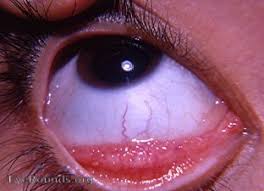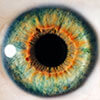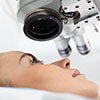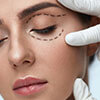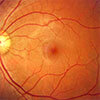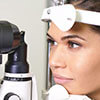Spring brings forth signs of life’s renewal but the beautiful flowering trees, plants and grasses also produce pollens that cause allergies, especially ocular allergies. In the United States, an estimated 50 million people suffer from allergies each year and up to 20 million people have symptoms of ocular allergies (1). Nationally, the number of prescriptions and the costs associated with treating allergic conjunctivitis also reflect a greater incidence (2). In the decade between the early 1990s and early 2000s, expenditures on prescriptions for ocular allergy treatments increased exponentially from $6 million to over $200 million (3). Allergic conjunctivitis is also becoming more common in our aging populations, who in the past have not been as affected by allergies.
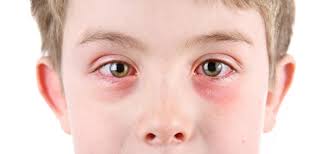
Courtesy of Conestoga Eye
Consider allergic conjunctivitis in your differential diagnosis when examining patients who complain of red and itchy eyes, especially this time of year. The hallmark symptom of allergic conjunctivitis is bilateral itching, often occurring seasonally. Appropriate treatments for allergic conjunctivitis require differentiating allergic conjunctivitis from other conditions such as dry eye syndrome, meibomian gland dysfunction (MGD) or blepharitis. Personal history and careful examination looking for associated signs of allergic conjunctivitis are critical.
Personal history may include:
- seasonality of symptoms
- tearing
- frequent rubbing of the eyes
- use of contact lenses
- use of any over-the-counter allergy treatments
- exposure to household allergens such as molds or pet dander
- presence of other systemic atopic conditions such as rhinosinusitis, hay fever, asthma or eczema
- positive family history of allergies or atopic disease
Signs of allergic conjunctivitis can vary in severity and can often be subtle, including:
- injection
- chemosis
- swelling of the limbal conjunctiva
- lid margins with signs of blepharitis, chalazia, MGD
- everted lids with papillae–giant papillae can be indicative of GPC (giant papillary conjunctivitis) or of vernal conjunctivitis
webeye.ophth.uioa.edu. allergic conjunctivitis
Allergic conjunctivitis affects vision negatively by altering the normal physiology of the ocular surface. Most allergic conjunctivitis and allergic eye disease results from the immune system overreacting to an antigen. After exposure to an allergen, the immune system produces immunoglobulin E (IgE) antibodies that bind to mast cells and basophils. Continued antigen exposure causes mast cell to degranulate and release histamine, prostaglandins and other inflammatory cytokines, which recruit other inflammatory mediating cells such as eosinophils. This inflammatory cascade, and particularly the histamine released by these inflammatory cells, causes the itching (H1 receptors) and triggers vasodilation and redness (H2 receptors).
Treatment aims to block the inflammatory cascade of allergic eye disease. Fortunately, several combination antihistamine/mast cell stabilizing eye drops treat allergic conjunctivitis effectively (4). Some are also available in generic form, which lowers the cost of these medications and makes them affordable for patients. Many drug companies offer copay assistance programs that can help lower the cost of some of these proprietary medications.
Antihistamines:For patients with mild acute allergic conjunctivitis in whom the primary complaint is itchiness the antihistamine / mast cell stabilizers are effective treatments. These H1 receptor antagonists effectively and rapidly suppress the itch caused by histamine binding to H1 receptors on sensory nerves of the conjunctiva. A 2015 Cochran review found that essentially all available H1 antagonists on the market were effective in suppressing symptoms of allergic conjunctivitis (4). They also reduce histamine release by stabilizing mast cells, an added benefit.
Patients often self-medicate with OTC oral antihistamines which have anti-muscarinic side effects, such as decreasing mucous and tear secretion. These manifest in dry mouth and dry eye symptoms which may exacerbate ocular symptoms associated with allergic conjunctivitis. Placing patients with mild allergic conjunctivitis, with few or minimal signs of ocular allergies, on a selective H1 antagonist may be more effective than keeping them on the OTC oral antihistamines. However for patients with severe allergic conjunctivitis associated with systemic atopic disease, referral to an allergist would be appropriate.
Steroids: Topical steroids are often indicated as a first line therapy for patients with more severe itching, accompanied by signs of allergic conjunctivitis such as redness, chemosis or stringy discharge. Steroids obstruct the arachidonic acid pathway, thereby blocking the common precursor molecule for the formation of many inflammatory mediators such as prostaglandins and leukotrienes. Corticosteroids are also thought to act by the induction of Phospholipase A2 inhibitory proteins that control the synthesis and release of inflammatory mediators. Corticosteroids are potent anti-inflammatory agents that inhibit edema, capillary dilation, leukocyte recruitment and migration, fibroblast proliferation and collagen deposition. Systemic absorption of topical steroids is usually minimal, however, they are well known to cause elevated IOP and cataracts. Prolonged use of corticosteroids is also known to suppress host immune response and increase the risk of ocular infections such as HSV and fungal keratitis. Patients placed on topical corticosteroid treatments must be followed closely by their prescribing eye doctor, who should provide the recommended regular eye exams and IOP checks for patients on steroids for 10 days or more. Several drug companies have developed novel corticosteroid formulations, by modifying some of the side groups of the basic corticosteroid structure, that offer much lower incidence of IOP elevation than prednisolone acetate.
Behavioral/Environmental Modifications: We must also be mindful of behavioral modifications that can help control ocular allergies. Avoidance of allergens is often one of the best ways to minimize symptoms of allergic conjunctivitis. Several recommendations by the Asthma and Allergy Foundation of America include:
- Avoid outdoor activities on high pollen count days
- Keep pets out of the bedroom
- Wash bed linens frequently to reduce allergen exposure to household dander and dust
- Keep windows closed during high pollen and mold seasons
- Use a HEPA filter on household air conditioners and heating units,as well as on vacuum cleaners
- Wash hands often to reduce antigen accumulation
- Avoid rubbing eyes, which can introduce antigens to the ocular mucosa, but can also stimulate the inflammatory cascade by causing the release of inflammatory mediators
Enjoy spring and be vigilant for the increase in seasonal allergic conjunctivitis, yet know that you have treatment options to help your patients weather the season comfortably.
- Singh K, Axelrod S, Bielory L. The epidemiology of ocular and nasal allergy in the United States. 1988-1994. J Allergy Clin Immunol. 2010; 126(4): 778-83.
- Gomes PJ. Trends in prevalence and treatment of ocular allergy. Curr Opin Allergy Clin Immunol. 2014: 14(5):451-6.
- Karpecki PM, et al. Armed against allergens. Review of Optom. 2016; July: 1-15.
- Castillo M, Scott NW, Mustafa MZ, et al. Topical antihistamines and mast cell stabilizers for trearing seasonal and perennial allergic conjunctivitis. Chochrane Database Syst Rev. 2015; Jun 1:6:CD009566.
- Allergies. Centers for Disease Control and Prevention. Available at: http://www.cdc.gov/healthcommunication/ToolsTemplates/EntertainmentEd/tips/Allergies.html.

Author: Tom Osgood, MD, MS
Smokey Point Clinic
I chose the topic of allergic conjunctivitis because of the timeliness of this topic and I see a lot of patients suffering from red, itchy eyes. This article is a reminder that allergy season is upon us! My true passion is refractive cataract surgery and trying to give every patient the vision they desire using the best techniques that new technology can provide. I try to treat every patient the way I would want to be treated and go the extra mile to give the best possible care to my patients.

